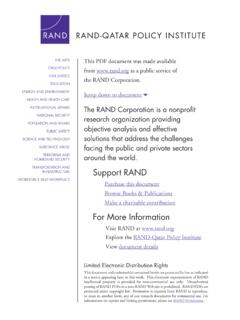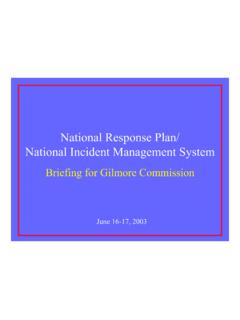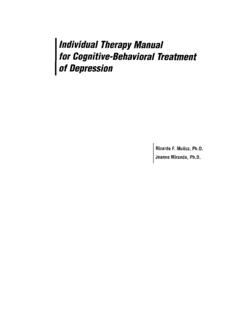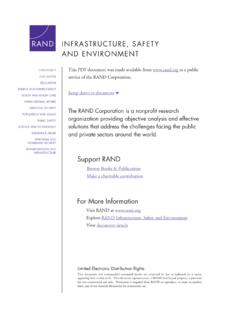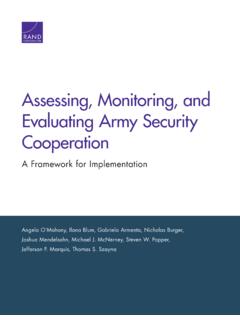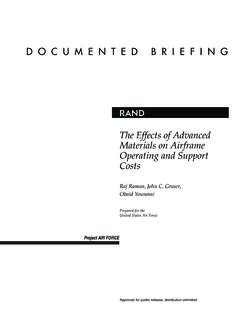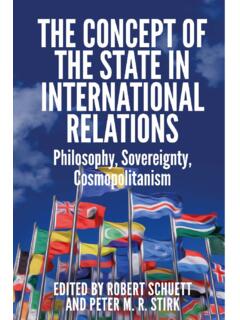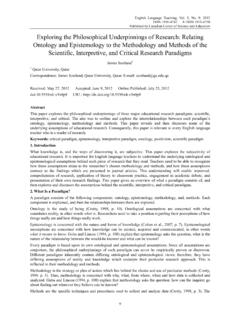Transcription of The U.S. Department of Defense’s Planning Process
1 The Department of defense s Planning ProcessComponents and ChallengesMichael J. Mazarr, Katharina Ley Best, Burgess Laird, Eric V. Larson, Michael E. Linick, Dan MaddenCORPORATIONL imited Print and Electronic Distribution RightsThis document and trademark(s) contained herein are protected by law. This representation of RAND intellectual property is provided for noncommercial use only. Unauthorized posting of this publication online is prohibited. Permission is given to duplicate this document for personal use only, as long as it is unaltered and complete.
2 Permission is required from RAND to reproduce, or reuse in another form, any of its research documents for commercial use. For information on reprint and linking permissions, please visit RAND Corporation is a research organization that develops solutions to public policy challenges to help make communities throughout the world safer and more secure, healthier and more prosperous. RAND is nonprofit, nonpartisan, and committed to the public interest. RAND s publications do not necessarily reflect the opinions of its research clients and RANDMake a tax-deductible charitable contribution at more information on this publication, visit of Congress Cataloging-in-Publication Data is available for this : 978-0-8330-9990-7 Published by the RAND Corporation, Santa Monica, Calif.
3 Copyright 2019 RAND CorporationR is a registered : Photo by Angel_a/Getty ImagesiiiPrefaceThis report documents research and analysis conducted as part of Phase Two of a proj-ect titled defense Planning for a New Era, sponsored by Headquarters, Department of the Army, G-8, Army Quadrennial defense Review Office. Phase Two of this project is focused on outlining a framework for defense Planning and force-sizing for the 2018 defense Strategy Review, including Planning scenarios that represent the full range of likely and potential operational demands for Army forces, both domestically and overseas.
4 Phase Two also describes the current defense Planning Process used by the Department of defense (DoD), with a focus on how scenarios are developed and employed to support defense Planning . It examines and critiques the way scenarios are used in current Planning processes, based on an assessment of unclassified documents and dialogues with current and former participants in the document was preceded by a report that covered Phase One of the project and described the forces that shaped conventional ground force Planning during the 1945 2015 period, with a focus on the strategic concepts and contingency scenar-ios used.
5 And also identified broader lessons of likely interest to contemporary force third phase of the project will turn to a substantive analysis of the Army that the nation needs, offering a framework for evaluating the current scenario set in ways that provide insight on current Army choices and research should be of interest to those directly involved in the Army and the wider DoD defense Planning Process , including senior Army leaders concerned with the broadest questions of Army roles and Project Unique Identification Code (PUIC) for the project that produced this document is research was conducted within R AND Arroyo Center s Strategy, Doctrine, and Resources Program.
6 R AND Arroyo Center, part of the R AND Corporation, is a federally funded research and development center (FFRDC) sponsored by the United St ate s A r Eric V. Larson, Force Planning Scenarios, 1945 2016: Their Origins and Use in defense Strategic Plan-ning, Santa Monica, Calif.: R AND Corporation, RR-2173-A, The Department of defense s Planning Process : Components and ChallengesR AND operates under a Federal-Wide Assurance (FWA00003425) and com-plies with the Code of Federal Regulations for the Protection of Human Subjects Under United States Law (45 CFR 46), also known as the Common Rule, as well as with the implementation guidance set forth in DoD Instruction As appli-cable, this compliance includes reviews and approvals by R AND s Institutional Review Board (the Human Subjects Protection Committee) and by the Army.
7 The views of sources utilized in this study are solely their own and do not represent the official policy or position of DoD or the AND s publications do not necessarily reflect the opinions of its research clients and ..iiiFigures and Table ..viiSummary ..ixAcknowledgments ..xiiiAbbreviations ..xvCHAPTER ONEI ntroduction ..1 Background ..1 Objectives ..3 Approach and Scope ..4 Organization of This Report ..5 CHAPTER T WOWhat Are the Typical Approaches to defense Planning ? ..7 Introduction ..7 Demand-Based Planning Approaches ..9 Capabilities-Based Planning Approaches.
8 14 The Use of Scenarios in Demand-Based Planning ..16 Resource-Focused Planning Approaches ..18 defense Planning in Practice ..20 Summary ..23 CHAPTER THREEC hallenges in defense Planning Methodology: The Use of Scenarios ..25 Introduction .. Historical Experience with defense Planning ..26 Current DoD defense Planning Processes ..28 Analytical Challenges with the Current Process ..31 Summary ..41vi The Department of defense s Planning Process : Components and ChallengesCHAPTER FOURC onclusions and Recommendations ..43 Conclusions ..43 Recommendations ..44 Bibliography.
9 49viiFigures and TableFigures Overview of defense Planning Approaches ..x Overview of defense Planning Approaches ..8 Table Proposed Recommendations ..xiiixSummaryThe Department of defense (DoD) relies on Planning processes to size, struc-ture, and posture its military forces. To size and shape its military forces, DoD needs a reasonably coherent defense Planning methodology. Unless its choices concerning the size, composition, and capabilities of its military forces, including its army, are entirely political or arbitrary, DoD must develop some rational mechanism for gen-erating requirements.
10 How many ground forces (and air, sea, space, cyber, and other capabilities) are appropriate for supporting the nation s defense strategy, and why? This is the burden of defense Planning the employment of analytical, Planning , and pro-gramming efforts to determine what sort of armed forces a state , DoD faces challenges in conducting defense Planning . Traditionally, the Office of the Secretary of defense (OSD) identifies its defense strategy and then selects scenarios that reflect the central elements of the chosen defense strategy and the oper-ating environment envisaged by the leadership of the Department .

